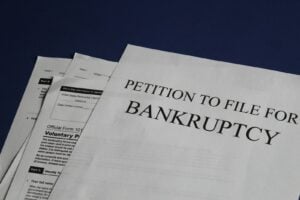The adoption of a safeguard or recovery plan by the court marks a decisive step for the company in difficulty. It is the sign that a solution has been found to clear the liabilities while allowing the business to continue. However, the judgment approving the plan is not an end in itself. An equally important phase then begins: that of its practical implementation, its rigorous monitoring and, sometimes, its necessary adaptation to changing economic realities. Understanding the mechanisms governing this period is essential for managers, creditors and all stakeholders. For an overview of different possible outcomes for companies in difficulty, please consult our dedicated guide.
The plan becomes binding as soon as it is adopted
As soon as the court rules and adopts the plan, it becomes binding on all parties. This binding nature is the cornerstone of the system, ensuring that the commitments made are respected and that the restructuring can be successfully completed.
Effects on the company and its directors
For the debtor company and its directors, the adoption of the plan means above all the obligation to scrupulously implement all the measures to be taken. safeguard plan measures or recovery measures defined therein. This may include internal reorganisations, disposals of non-strategic assets, management changes and, of course, meeting creditor payment schedules.. The directors regain some of their management powers, but these are now exercised within the strict framework of the plan's commitments. Any major decision likely to have an impact on the company's ability to comply with the plan must be carefully considered, and even submitted for the opinion of the procedural bodies still in office. The plan becomes the company's new roadmap, and compliance with it determines its survival.
Effects on creditors (stay of proceedings, enforceability of time limits/discounts)
The most tangible effect for creditors whose claims predate the opening judgment is the definitive cessation of individual legal proceedings.. This stay, which was temporary during the observation period, becomes permanent once the plan has been approved. Creditors can no longer take individual action to recover their debts. They are now subject to the provisions of the plan, which is fully enforceable against them. This means that they are bound by the payment terms (up to 10 years, or even 15 years for farmers) and any debt write-offs granted under the plan, even if they voted against the plan.. The plan crystallises previous liabilities and organises their collective settlement in accordance with the terms and conditions approved by the court. Only debts that arose after the opening judgment and that are not paid when due could potentially justify new proceedings, under certain conditions.
The role of the plan execution commissioner
To ensure that the plan is properly implemented and that the commitments made are honoured, the law provides for the appointment of a key player: the commissaire à l'exécution du plan (CEP). This is often the same judicial representative or administrator who was in charge during the observation period.. His role is essential to the long-term success of the process.
Monitoring the proper application of the plan
The primary mission of the CEP is to monitor. It must ensure that the company complies with all the obligations contained in the plan: payment of dividends to creditors in accordance with the schedule, implementation of restructuring measures, compliance with any commitments to sell, etc. It must also keep the company informed of the economic and financial situation throughout the implementation of the plan. It keeps itself informed of the company's economic and financial situation throughout the implementation of the plan. To this end, it may ask management for all necessary information and has the right to issue a warning if it observes any difficulties or shortcomings. It draws up regular reports to the court and the public prosecutor on the progress of the plan.. This active monitoring is a guarantee of seriousness and helps to anticipate possible failures.
Actions in the event of non-performance
If the administrator finds that the company is not honouring its commitments, he does not remain passive. His role is also to act to protect the interests of the creditors and the purpose of the plan.. It must first try to obtain explanations and guarantees from the debtor. If the defaults persist and are sufficiently serious (for example, repeated non-payment of instalments), the CEP has the power and even the duty to take the matter to court.. Depending on the nature and seriousness of the non-performance, he may request either a modification of the plan (if adjustments are possible) or its outright termination, which would put an end to the plan and open the way, in most cases, to new collective proceedings (receivership or compulsory liquidation)..
Payment of dividends under the plan
One of the most practical aspects of implementing the plan is the regular payment of sums due to creditors, known as "dividends". This term does not refer here to a share of the profits, but to the proportion of their claim that each creditor will receive in accordance with the terms laid down by the court.
Payment schedule and terms
The safeguard or recovery plan sets out the precise payment schedule. It specifies the dates on which dividends must be paid and the amounts involved. By law, the first payment must be made in the year following the judgment approving the plan, unless the court grants a specific extension. Dividends may be paid annually, half-yearly or even quarterly in some cases, although annual payments are the most common. The amount of dividends is calculated on the basis of the debtor's proposals, the company's financial capacity and any discounts granted. The terms of payment (bank transfer, cheque) are also defined. The preparing the plan is therefore a decisive phase in setting realistic deadlines.
Consequences of non-payment of a due date
Failure to pay a single instalment (a dividend) on the due date constitutes a breach of the undertakings in the plan.. This is an important warning signal that should not be taken lightly by the company. As soon as the first payment default is noted, the administrator responsible for implementing the plan is entitled to intervene. If the situation is not quickly remedied, or if the default reveals structural financial difficulties that call into question the viability of the plan, the CEP may refer the matter to the court.. After analysis by the court, non-payment of a due date may lead to the termination of the plan if no alternative solution is found. It is therefore essential for the company to contact the CEP in advance if it anticipates cash flow difficulties in meeting a due date.
Substantial modification of the plan
The life of a company is not a long quiet river, and the period of execution of a plan, which can last up to ten years, is no exception to this rule. Unforeseen events, whether positive or negative, can occur and affect the company's ability to meet its initial commitments. The law provides for the possibility of amending the plan in certain circumstances.
When is a modification necessary?
A modification of the plan may be necessary when significant changes in the company's situation or its economic environment render the initial objectives of the plan unrealistic or unattainable.. This may be due to an unforeseen deterioration in the economic situation, the loss of a major customer, the emergence of new financial difficulties or, more rarely, to a significant and lasting improvement in the situation enabling repayments to be accelerated. However, the change can only be "substantial", i.e. it must relate to essential elements of the plan, such as payment terms, discounts granted or reorganisation measures.. These are not minor adjustments, but a thorough revision of certain aspects of the initial plan. The request for modification must be justified by new and serious factors that have arisen since the plan was adopted.
Procedure for applying to the court for a variation
The application for a substantial modification of the plan must be submitted to the court that approved the initial plan.. It can be made by the debtor company itself, or by the administrator in charge of the execution of the plan if he deems this modification necessary.. The public prosecutor may also initiate this request. The procedure again involves consultation with the creditors affected by the proposed changes, particularly if the changes involve reducing the initial commitments (e.g. requesting additional time). The court examines the request, taking into account changes in the situation, the reasons given and the opinions of the parties (CEP, creditors consulted). It issues a ruling that may accept the modification, reject it or propose adjustments. If the amendment is accepted, the amended plan is binding on all parties. This procedure can be complex and often requires the assistance of a professional; do not hesitate to call in a lawyer to assess your options.
Rescission of the plan: failure of enforcement
Unfortunately, not all safeguard or recovery plans are successful. When the company is unable to fulfil its commitments over the long term, or when new insurmountable difficulties arise, the plan may be "resolved" by the court. This is a declaration that the attempt at reorganisation through the plan has failed.
Causes of termination (non-performance of undertakings, suspension of payments)
The main reason for resolving a plan is the debtor's failure to fulfil its financial commitments or other obligations under the plan (restructuring measures, etc.) in a manner that is sufficiently serious and persistent to compromise the very purpose of the plan.. A simple one-off delay is generally not enough, but repeated non-payment of dividends is a frequent reason for termination. Another major cause is the occurrence of a new state of suspension of payments.. If, despite the plan, the company is no longer able to meet its current liabilities (including debts arising after the opening of the initial proceedings) with its available assets, the court has no choice but to note this situation, which almost automatically results in the termination of the current plan.
Who can request a resolution?
The request for resolution of the plan may be initiated by several parties. The commissioner responsible for implementing the plan is in the front line: it is even one of his duties if he observes a serious and persistent failure to implement the plan.. A creditor, whether public or private, may also request resolution if he is not paid the dividends due to him on the due dates stipulated in the plan.. Lastly, the public prosecutor may also refer the matter to the court for resolution.. The debtor company itself can, in theory, apply for the plan to be terminated if it finds that it is definitively unable to implement the plan, but in practice this often amounts to declaring a new suspension of payments.
Consequences of resolution (possible opening of an administration or liquidation)
Rescission of the plan immediately terminates the plan. The deadlines and discounts granted to creditors under the plan disappear retroactively: creditors recover all of their initial claims, less only the sums already received as dividends.. Above all, the judgment pronouncing the resolution generally opens new collective proceedings in the same decision.. If there is a possibility of turning the business around despite the failure of the plan (for example, through a total or partial sale), the court will open receivership proceedings. If, on the other hand, recovery is clearly impossible, the court will order the company's liquidation.. Resolution therefore often marks a critical stage, potentially the last before the company disappears.
The normal end of the plan: full discharge of liabilities
Fortunately, resolution is not the inevitable outcome. The primary objective of a safeguard or recovery plan is to ensure that the company's liabilities are fully discharged within the specified timeframe. When the company manages to meet all its commitments and pay the final dividend, the plan ends as normal.
Once the last instalment has been paid, the commissioner responsible for the implementation of the plan will draw up a final report certifying that all the commitments have been fulfilled.. It notes that the admitted liabilities have been repaid in full in accordance with the terms of the plan. The court takes note of the end of the CEP's mission and the completion of the plan by means of a closing decision.. For the company, this is the end of the process of dealing with its previous difficulties. It is freed from the constraints of the insolvency proceedings and can look to the future on a sounder footing. It is the successful culmination of an often long and demanding process, which demonstrates the company's ability to restructure and honour its debts.
Implementing a safeguard or recovery plan is a dynamic process that requires constant vigilance on the part of management and close monitoring of the bodies involved in the procedure. If you are involved in the implementation of a plan or anticipate difficulties, do not hesitate to contact our law firm to discuss your situation and the options available to you.
Sources
- Commercial Code, in particular articles L626-1 et seq. (Safeguard plan) and L631-19 et seq. (Reorganisation plan), in particular the sections relating to the implementation, amendment and termination of plans (e.g. L626-25 to L626-28).




